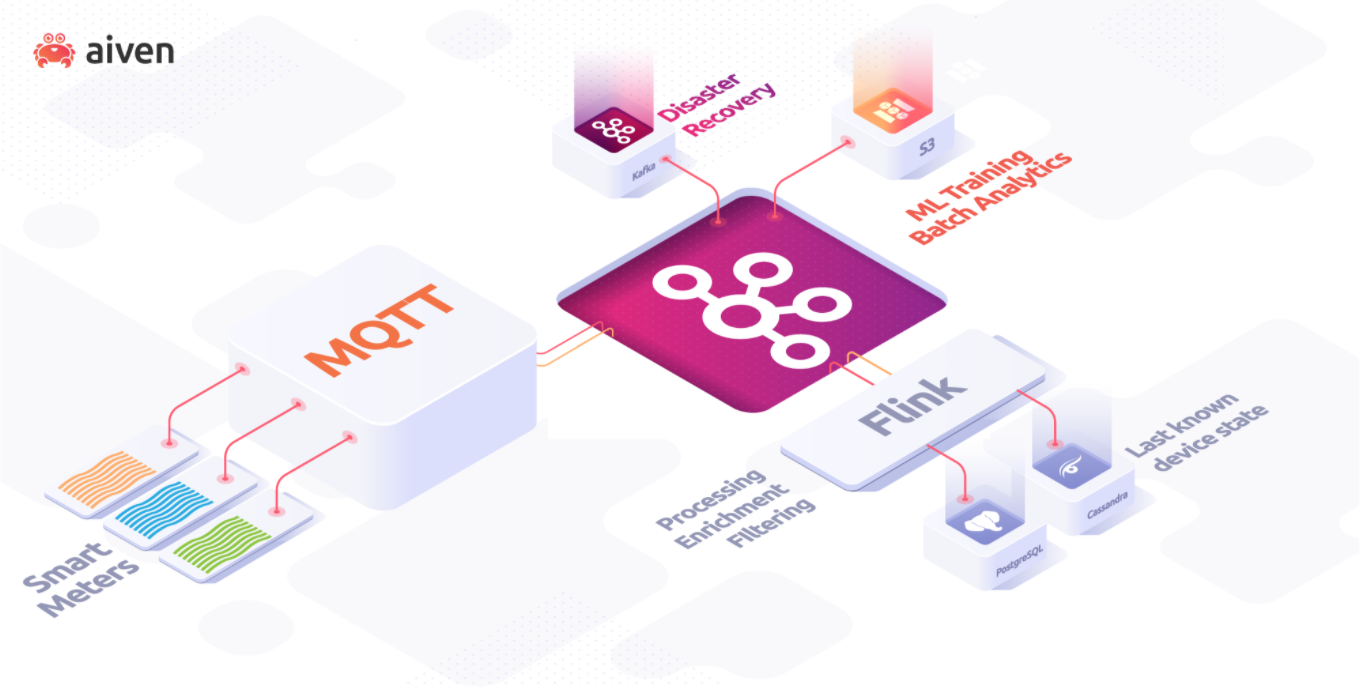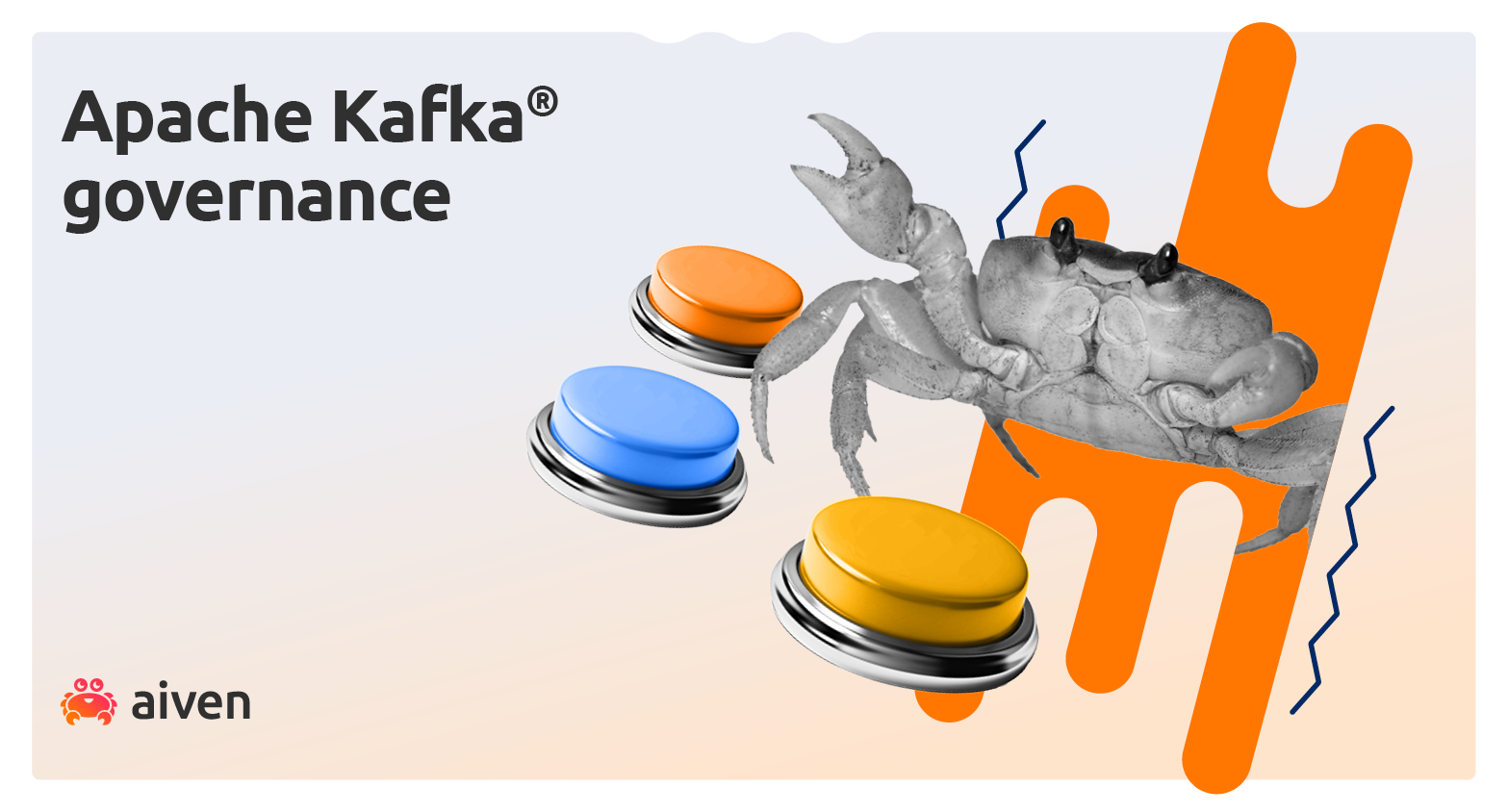Aug 11, 2020
3 considerations for building an enterprise IoT solution
Our partners at Sierra Wireless are the world's leading IoT solutions provider. Here are 3 considerations to cover in order to build a successful IoT solution.
Jan Kirchhoff
|RSS FeedEnterprise Sales Director DACH at Aiven
Internet of things (IoT) refers to the billions of physical devices connected to the internet which collect, store, and share data. Real-world examples of IoT include self-driving cars and cashier-less supermarkets, or industrial applications like equipment monitoring.
It has changed the world in the past 20 years, prompting companies of all sizes to add new products and improve existing offerings with IoT technology. This is no easy task, as the combination of hardware and software poses enormous challenges at scale.
Before you begin building your enterprise IoT solution, you must set the foundation for success with careful planning and execution. To get you started, we lay out the 3 fundamental considerations to cover in order to best ensure success.
1. Business vision
Developing a successful IoT solution is a cross-functional exercise, and this requires a strong business vision to serve as a reference point for all stakeholders. You should clearly define your IoT solution’s purpose by answering a few key questions at the outset:
- What problem are you trying to solve?
The desire to offer an IoT solution should stem from a legitimate problem that can be observed and addressed in the market. If you’re entering IoT solely to catch the wave, you should re-evaluate your strategy.
- What does success look like?
Define your objectives and the key results used to measure the success of your IoT solution. These will depend on whether you are looking to increase your existing market share by augmenting a current solution or enter a completely new market.
- Do you have the capabilities to build this solution?
The answer to this question is almost always no. Lacking key capabilities might mean choosing between an internet or thing-centric solution, where the value proposition stems from either the nature of interconnectivity or the devices and sensors themselves.
Ideally, you shouldn’t have to choose one or the other. If you’re lacking fundamental capabilities, you should immediately start establishing partnerships with the right experts and vendors to build a robust first iteration and reduce its time-to-market.
2. Time-to-market and know-how
The time-to-market for building an IoT solution can be very long due to IoT’s unique confluence of hardware and software. Not only do you need to define and produce/source the required devices and sensors, you also need to figure out how to manage the data that is generated.
Enterprise companies often insist on building IoT solutions in-house for the sake of control. The problem with this approach is that it is resource-heavy and difficult to manage, requiring teams to work around the clock not only to develop and set up the software but maintain it as well.
And what about the hardware? After you source device/sensor manufacturers, you then need to prototype them and feed their data outputs into your custom-built pipelines. Doing all of this in-house poses unnecessary risk, making for a long development roadmap and lost opportunities.
Here’s where expert partners come into the picture. Our friends at Sierra Wireless are no strangers to IoT. They’re a leading IoT solutions provider — simplifying customer IoT journeys by combining devices, networks, and software to accelerate their data-driven transformation.
While Sierra Wireless takes care of the hardware infrastructure, Aiven can handle your data infrastructure by helping you build a fully-managed, open source data pipeline with snap-in components to ingest, transfer, and store your data. Now, let’s look at the last consideration.
3. Technical and operational setup
As indicated, IoT solutions require hardware and data infrastructure for the ingestion, transfer, and storage of data. Starting with hardware, let’s consider Sierra wireless’s Octave, the only all-in-one edge-to-cloud solution for connecting industrial assets securely and scalably.
Octave accomplishes this through out-of-the-box industrial protocol support (Modbus, CANopen, etc.), global connectivity, SIM- and device management, intelligent edge processing, data orchestration, and cloud connectors and APIs to integrate with any cloud service provider.
Sierra Wireless also has its own global wireless cellular network and provides a private APN to fully separate your data traffic from the public internet. Now, let’s talk about the other side of the coin — the data infrastructure requirements for a flexible, reliable, and scalable IoT solution.
Firstly, you should consider open source technology. Open source data software technology offers many advantages than its proprietary counterparts, namely lower total cost of ownership (TCO) and more control over its implementation. Likewise, it is often more advanced.
Take Apache Kafka for example. When you include it in your data infrastructure as your pipeline’s streaming platform, you are getting a solution with the low-latency and scalability needed for IoT and one that has been battle-tested by the likes of OVO Energy.
Here is an example of a Kafka-centric IoT architecture built for monitoring smart energy meters:
But, there is a catch: Kafka is notoriously difficult to maintain, which is why many companies choose to use a managed service such as Aiven for Apache Kafka, which takes care of the updates, monitoring, maintenance, etc. that you would normally have to resource in-house.
Closing thoughts
There are many ways to build and operate a secure and globally scalable IoT solution. While the above information is not a comprehensive framework for building your solution, it provides a foundation to get the ball rolling for building it.
The most important takeaway is that no matter how many resources you have at your disposal, working with quality partners is often the best way to quickly build a high-quality IoT solution that can make the data your devices produce actionable.
Aiven and Sierra Wireless jointly reduce the complexity and cost of IoT development, removing operational concerns. With us, you can liberate resources to focus on what matters - differentiating yourself by delivering superior customer value.
To keep up-to-date on the latest insight, follow our blog and changelog RSS feeds, or follow us on Twitter or LinkedIn to stay up to date.
Stay updated with Aiven
Subscribe for the latest news and insights on open source, Aiven offerings, and more.





